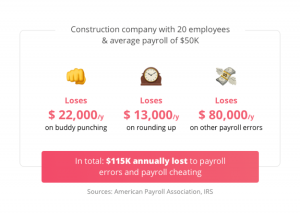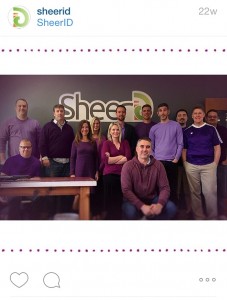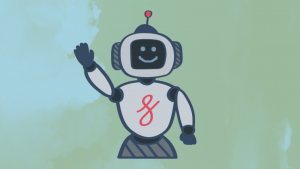Learn why loyalty programs are a win-win for brands and customers and ways marketers can reward customers across various channels.
As a marketer, one of your primary goals is to not only attract new customers but retain the ones you already have and entice them to buy from your business again and again. Offering a competitively priced product that customers want to purchase is a huge piece of the puzzle. But how do you convince those customers to stay with you? How do you get them to buy, not once, but many times over?
The answer largely lies in building a relationship with your customers and earning their loyalty. To do so takes time and effort — from providing exceptional service and soliciting feedback to understanding their needs. However, implementing a strong customer loyalty program is a highly effective tool in the loyalty kit.
Anyone who has experienced the thrill of earning that free large iced coffee or cashed in on rewards points to get special deals or freebies at their favorite retailers or restaurants has interacted with a loyalty marketing program. When executed properly, they are a win-win: Customers benefit from discounts or other perks on items they’d most likely be buying anyway, while retailers enjoy customer retention, increased revenue and other avenues for growth.
The programs, perhaps unsurprisingly, are popular. In 2022, U.S. consumers belonged to an average of more than 16 loyalty programs and regularly used about half of them, according to research firm Statista. The global market for loyalty is worth billions, forecast to explode to $ 24 billion by the end of 2028.
In this article, we’ll go over what loyalty marketing is, walk through a few different types of loyalty programs and discuss loyalty marketing in the digital age (and what it means for marketers) — as well as touch on what’s ahead for marketers in the space.
Table of contents
- What is loyalty marketing?
- Types of loyalty programs
- Loyalty marketing in the digital age
- What’s next in loyalty marketing?
- Additional resources
Estimated reading time: 6 minutes
What is loyalty marketing?
Simply put, loyalty marketing is a strategy by which businesses attempt to attract customers, build their trust and retain them through offering incentives, such as free products (beauty brands, for example, often include sample-sized products in orders over a certain dollar amount), discounts on products and perks such as earning points on purchases that can be redeemed later for rewards. Airline frequent flyer programs fall under the loyalty umbrella.
The idea is that customers who spend money (as well as sign up for the program) are rewarded with things that either hold monetary value or receive exclusive, early access to sales, new products or the like.
Regardless of the perk, however, the goal is two-fold:
- To keep existing customers returning for more.
- To have those same customers refer others to do the same.
And because research shows that loyal customers spend more and more on each subsequent purchase (and are more likely to try new products from businesses they are loyal to), marketers know that this segment is an important part of any marketing strategy.
Types of loyalty programs
There are several types of loyalty programs out there. Some of the most common are:
- Points programs. In this common program, points are accumulated as dollars are spent. Customers redeem points for benefits that might include discounts, freebies, etc.
- Tiered programs. Upon signing up, customers might be at the lowest tier with basic perks. As they spend more, they move to higher tiers with better incentives.
- Paid loyalty programs. An obvious example in this space is Amazon Prime, which, for a yearly fee, provides members with free two-day shipping, access to certain sales and the ability to stream certain titles and shows for free on its streaming service, among other perks.
- It’s also worth mentioning subscription models based on recurring revenue. These can serve as ways of retaining customers over an extended period of time, although the challenge is securing renewals. The subscription model can be found everywhere, from online delivery services to regularly purchased consumer goods like razor blades and high-cost software.
Loyalty marketing in the digital age
For consumers of a certain age, loyalty marketing brings to mind cards (punched or stamped) presented at checkout in brick-and-mortar stores which are then carefully tucked back in a wallet and saved until the pre-determined number of purchases is met and a reward is doled out.
These programs (which absolutely still exist) are relatively simplistic, free to sign up for and offer a visible path to a tangible reward — that free sandwich after the fifth purchase, for example — for spending money with a particular business.
But they also rely on shoppers returning to the brick-and-mortar store to both spend and earn rewards. Because they’re basic (filling out a quick card in-store or providing an email address is often about all there is to signup), it’s tough for businesses to do targeted marketing or track particulars about what customers are buying, when they’re buying it and where.
Today, loyalty must be mobile-forward and integrated wherever customers engage with brands and retailers. This omnichannel approach to loyalty marketing aims to create engagement by:
- Interacting with customers.
- Tracking their purchases/rewards across devices.
- Using that information to anticipate their wants and needs.
However, the most important part of omnichannel loyalty is that it provides retailers and marketers with large amounts of relevant data that, if used correctly, can illuminate customer behavior and lead to better marketing strategies.
Starbucks’s loyalty marketing program — explained in detail here — is a great example of omnichannel. Customers who visit a café to have coffee might be tempted to use the free Wi-Fi. But access requires users to provide an email address and agree to be contacted about promotions and offers.
The company then ups the ante a bit. When an offer email comes in, redeeming it requires the customer to sign up for the rewards program and use the app to make the purchase that leads to the reward.
This is engagement across multiple channels, which enables the company to send targeted offers based on location, drink preference and so on. These targeted offers tell the customer that Starbucks understands what they want — which in turn builds additional trust.
What’s next in loyalty marketing?
In 2023, marketers must up their game and devise out-of-the-box marketing programs to keep customers’ fleeting attention spans. Adding gamification to the loyalty mix — using trivia, puzzles and other app-based games to increase engagement — is one trend that’s gaining more traction.
Marketers also make rewards mobile-friendly and continue to push toward app-based programs Strategic partnerships are also on the rise. For instance, many hotel brands have linked with ride-sharing providers to offer deals to guests enrolled in their rewards programs.
But regardless of what your loyalty program looks like in 2023, ensure an emotional connection to your customers underpins it. Emotions have the highest impact on loyalty, according to Capgemini.
Again, that means marketers must create programs and experiences tailored to consumers’ preferences. But the payoff is there: 70% of emotionally engaged consumers spend twice as much on brands they are loyal to, per the same Capgemini report.
The post Why we care about loyalty marketing appeared first on MarTech.
MarTech(8)








